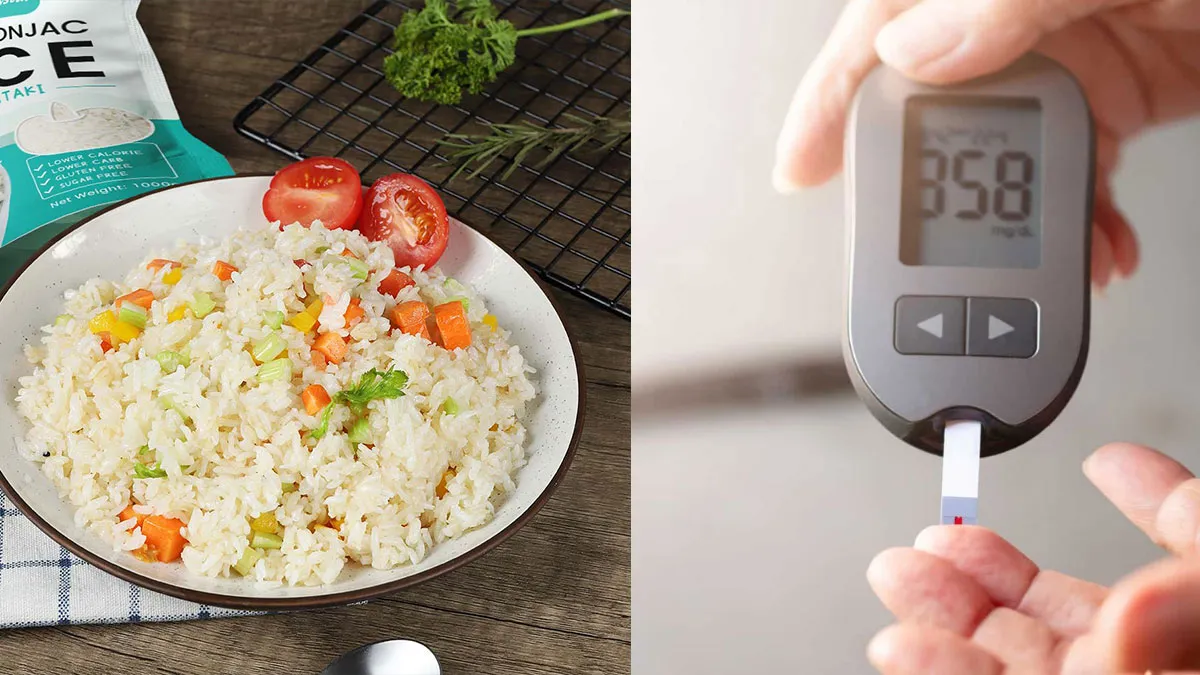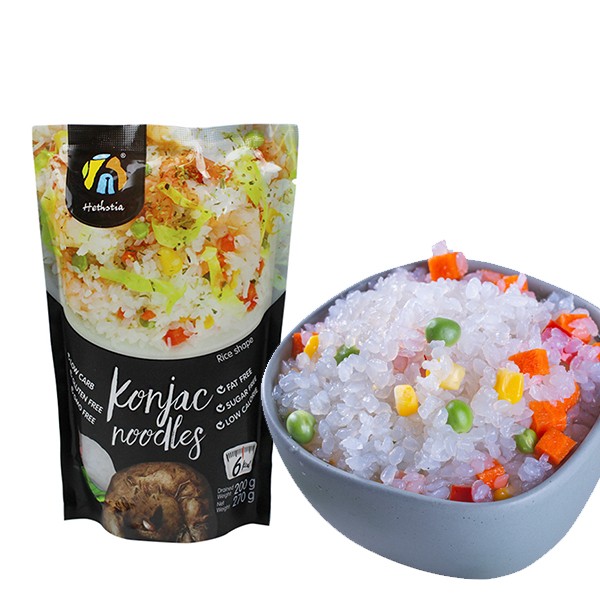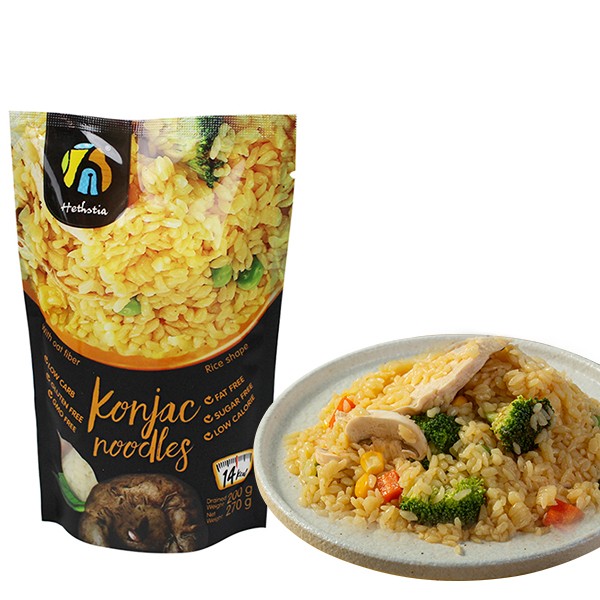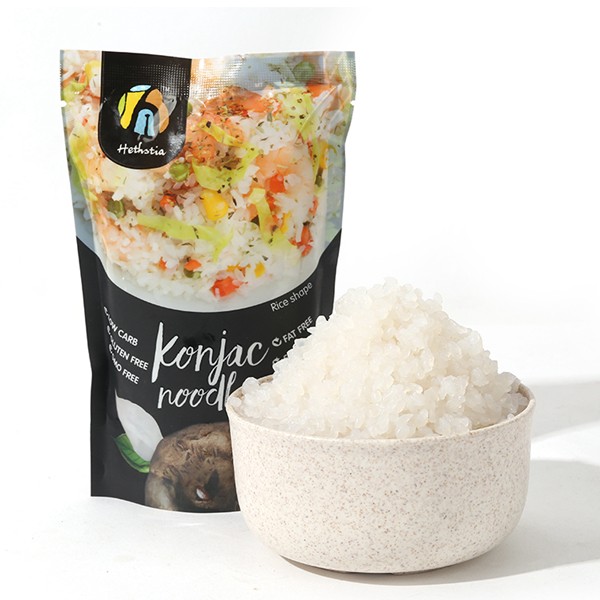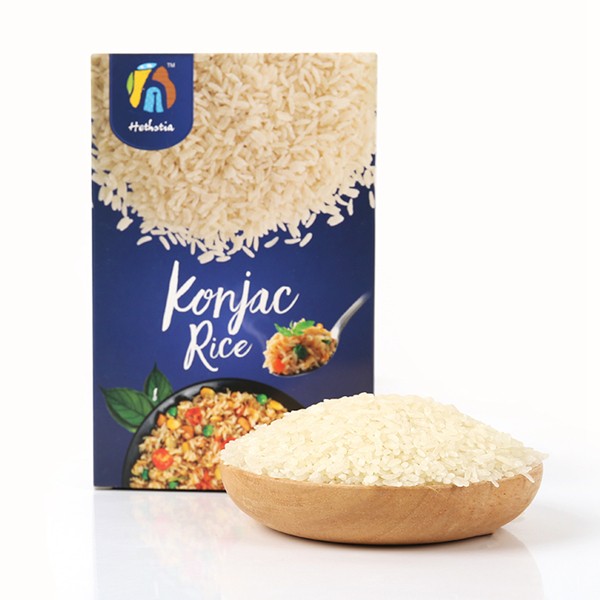1. Glycemic Index (GI) of Shirataki Rice
Glycemic index: The glycemic index of shirataki rice is very low, and according to research, it is 17, and the glycemic load is 0.
This is because shirataki rice is mainly composed of water-soluble dietary fiber and contains almost no digestible carbohydrates. It is a food with a low glycemic index and low glycemic load, so it will not cause a significant increase in blood sugar levels.
2. Can diabetics eat shirataki rice?
•Suitability: Shirataki rice is very suitable for diabetics. Due to its extremely low glycemic index and high dietary fiber content, Shirataki rice helps control post-meal blood sugar fluctuations and is an ideal choice for diabetics.
•Note: Nevertheless, people with diabetes should still consult a doctor or nutritionist when making dietary adjustments to ensure that the overall diet plan meets their personal health needs.
Studies have shown that daily consumption of konjac by patients with type 2 diabetes or impaired glucose tolerance can significantly lower blood sugar, improve their condition, and reduce the burden on the pancreas.
3. What are the health benefits of shirataki rice?
•Promote digestive health: Rich dietary fiber helps improve intestinal function and prevent constipation.
•Weight Management: Low in calories and can increase satiety, helping to control weight.
•Regulate blood sugar levels: Helps maintain stable blood sugar concentrations, especially for diabetic patients.
• Lowers cholesterol: May help reduce bad cholesterol (LDL) levels in the blood and protect cardiovascular health.
• Detoxification and beauty: It helps to remove toxins from the body and improve skin condition by promoting bowel movements.
4. Shirataki Rice Nutritional Information
• Calories: 6Kcal/100g
• Dietary fiber: 2.8g/100g
• Carbohydrates: 1.8g/100g
• Sodium: 0.29mg/100g
• Fat: 0
• Protein: 0
5. How is shirataki rice different from traditional rice?
• Difference in ingredients: Traditional rice is rich in carbohydrates, while shirataki rice is mainly composed of water-soluble dietary fiber and contains almost no digestible carbohydrates.
•Nutritional value: Compared with traditional rice, shirataki rice provides fewer calories and higher dietary fiber, but lacks the B vitamins and other micronutrients found in traditional rice.
•Taste experience: Shirataki rice has a unique elasticity and smoothness, while traditional rice is softer and more glutinous. There is a clear difference in the taste of the two after cooking.
6. Safety and side effects of shirataki rice
•Allergic reactions: Although rare, some people may be allergic to konjac or its products, which may manifest as allergic symptoms such as rash, itching, and difficulty breathing. If these symptoms occur, stop eating immediately and seek medical help.
•Eat in moderation: When trying konjac rice for the first time, start with a small amount and gradually increase to the recommended amount to allow the body to adapt.
•Drink enough water: To help dietary fiber work better and prevent constipation, ensure adequate water intake while eating shirataki rice.
•Note for special groups: Pregnant women, breastfeeding women, and people with severe gastrointestinal diseases should eat under the guidance of a doctor.
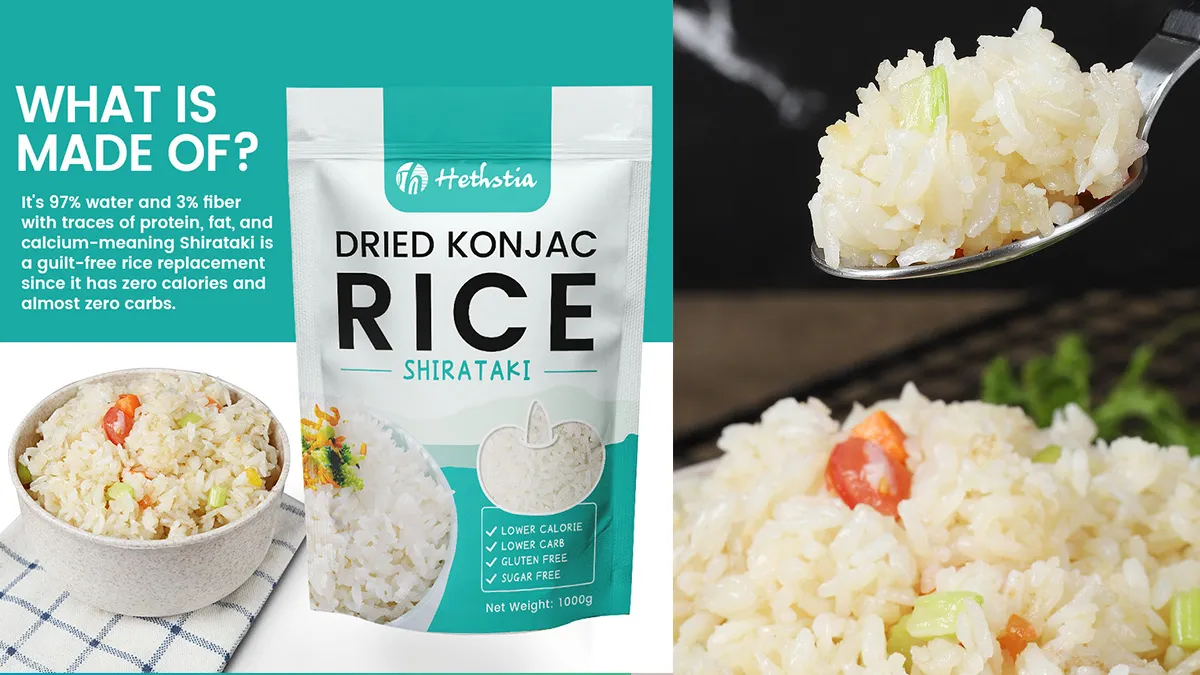
7. Shirataki Rice Buying Guide
7.1 Appearance inspection
• Color: High-quality shirataki rice usually presents a natural off-white or milky white color. If the color is too white or has abnormal color changes, bleach or other chemicals may have been added.
• Shape: The grains should be uniform and complete, without obvious damage or deformation.
7.2 Texture test
• Elasticity: Gently press the konjac rice, and you should feel a certain elasticity and toughness, and it will not break or stick easily.
• Surface smoothness: The surface of good shirataki rice should be smooth, and there should be no roughness or foreign body feeling.
7.3 Odor
•Natural fragrance: Fresh konjac rice should have a light natural fragrance and should not have any peculiar smell, such as moldy, sour, or other abnormal smells.
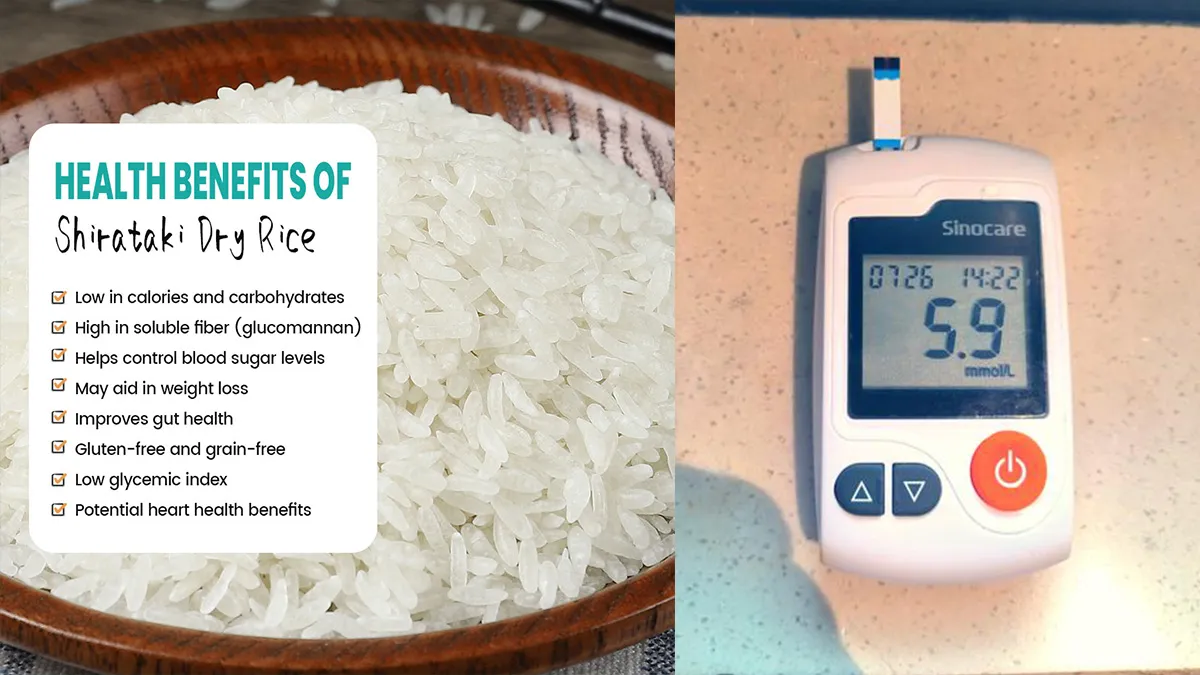
7.5 Ingredients
• Purity: Try to choose products with simple ingredients, preferably only containing konjac flour and other necessary additives (such as a small amount of citric acid to improve the taste).
• No Additives: Avoid buying products with too many artificial colors, flavors, or other unnecessary additives.
7.6 Production date and shelf life
•Production date: Make sure the shirataki rice you buy is recently produced to ensure its freshness.
•Shelf life: Pay attention to the shelf life of the product. Expired products may affect food safety and taste.
7.7 Packaging integrity
• Sealing: Check whether the packaging is damaged or leaking. Good sealing performance can effectively prevent the product from getting damp and deteriorating.
• Transparency: Some high-quality konjac rice will be packaged in transparent packaging so that the status of the product can be directly observed.

